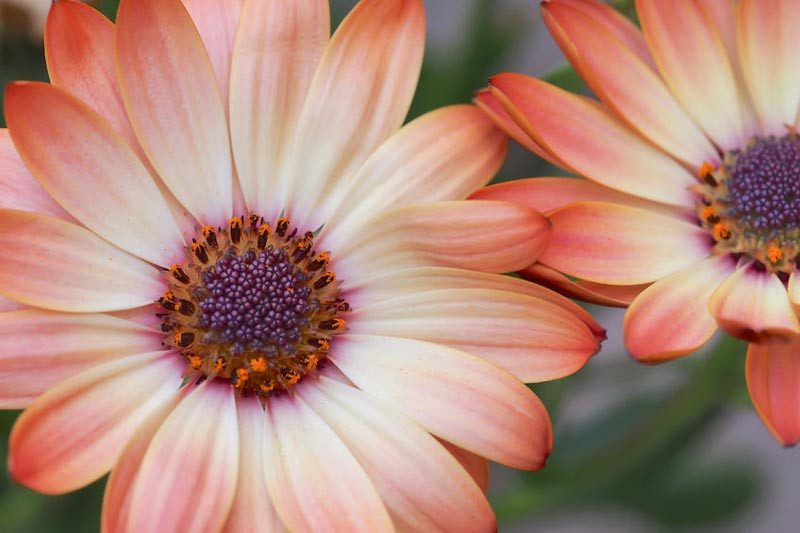Osteospermum
Osteospermum, commonly known as African Daisies, is a striking and versatile flowering plant belonging to the Asteraceae family. Native to South Africa, this genus consists of approximately 50 species, showcasing a variety of growth habits, flower colors, and sizes.
Flowers: The plants are known for their vibrant, daisy-like flowers, which come in a wide range of colors, including white, cream, yellow, pink, purple, and blue. These blooms often feature a contrasting dark center, adding visual interest and depth to the flower display.
Size: African Daisies have a mounding or spreading growth habit, with heights ranging from 12 inches (30 cm) to 3 feet (90 cm), and similar spreads depending on the species or cultivar.
Foliage: Their foliage is typically green or grayish-green, adding a lovely textural contrast to the garden.
Hardiness: Osteospermum thrives in USDA hardiness zones 10 to 11, where they can be grown as perennials. In colder climates, they are often treated as annuals or brought indoors during the winter months. They require a sunny location with at least 6-8 hours of direct sunlight daily to produce abundant blooms.
Uses: The versatile nature of Osteospermum makes them suitable for various uses in the landscape. They can be incorporated into mixed borders, rock gardens, and coastal gardens, where their vibrant colors and interesting foliage create a striking display. The spreading or trailing varieties work well as ground covers, suppressing weeds and reducing soil erosion on slopes or banks. Additionally, African Daisies can be grown in containers or hanging baskets, either as a focal point or combined with other plants for a stunning display.
Benefits: Aside from their aesthetic value, Osteospermum offers several benefits. They attract bees, butterflies, and other beneficial insects, making them an ideal addition to pollinator-friendly gardens. Their drought tolerance and ability to grow in sandy or rocky soils make them suitable for xeriscaping or low-water gardening. Moreover, the plants are not considered toxic to humans or pets, making them a safe choice for gardens with children and animals.

